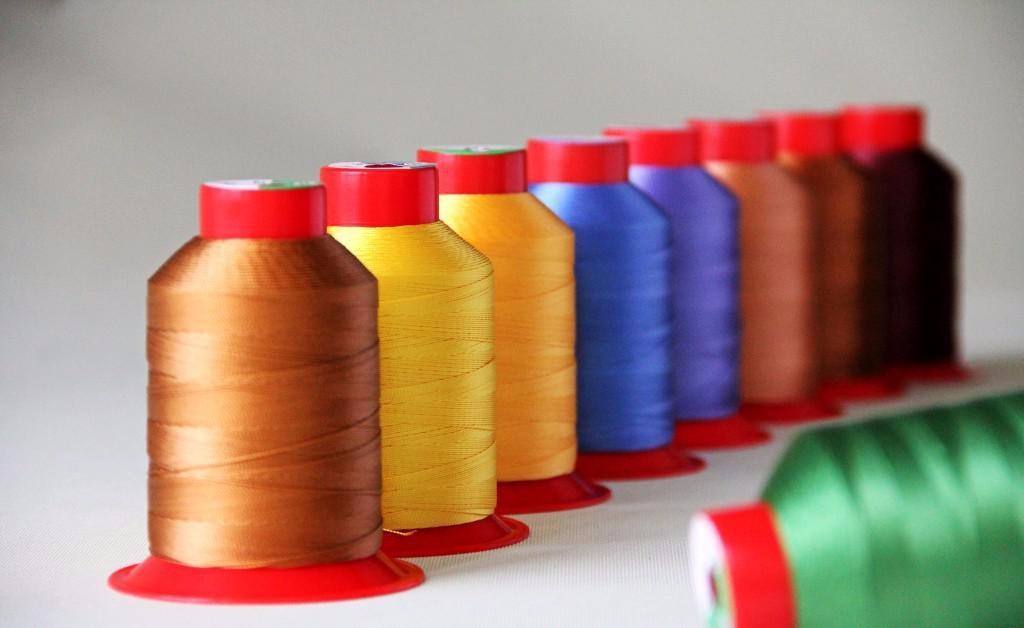Characteristics and Applications of Sewing Thread
Sewing thread is the main thread material used to sew various clothing materials, with both practical and decorative functions. The quality of sewing thread not only affects sewing efficiency, but also affects the appearance quality and processing cost of the sewn clothing and products. Therefore, it is necessary to understand the relevant knowledge of sewing thread.
1. Classification and characteristics of sewing thread
The most commonly used classification method for sewing thread is the material classification method, which includes three categories: natural fiber sewing thread, synthetic fiber sewing thread, and blended sewing thread.
● Natural fiber sewing thread
a. Cotton sewing thread: a sewing thread made from cotton fibers through processes such as refining, bleaching, sizing, and waxing. High strength, good heat resistance, suitable for high-speed sewing and durable ironing, with the drawback of poor elasticity and wear resistance. It can be divided into no light (or soft wire), silk light, and wax light. Cotton stitching is mainly used for sewing cotton fabrics, leather, and high-temperature ironed clothing.
b. Silk thread: a long silk thread or silk thread made of natural silk, with excellent luster, strength, elasticity, and wear resistance superior to cotton thread. It is suitable for sewing various types of silk clothing, high-end woolen clothing, fur and leather clothing, etc. In ancient China, silk embroidery thread was commonly used to embroider exquisite decorative embroidery products.

● Synthetic fiber sewing thread
a. Polyester sewing thread: It is currently the main sewing thread made of polyester filament or short fiber material. It has the characteristics of high strength, good elasticity, wear resistance, low shrinkage rate, and good chemical stability. It is mainly used for sewing denim, sportswear, leather products, wool and military uniforms. It should be noted that polyester stitching has a low melting point and is prone to melting during high-speed sewing, blocking the needle hole and causing the stitching to break. Therefore, it is not suitable for clothing sewn at high speeds.
b. Nylon sewing thread: Nylon sewing thread is made of pure nylon multifilament and is divided into three types: long thread, short fiber thread, and elastic deformation thread. Currently, the main type is nylon long thread. Its strengths lie in its high stretchability [MSOffice 3] and good elasticity. Its breaking length is three times longer than the same standard cotton thread, making it suitable for sewing synthetic, woolen, leather, and elastic clothing. The greater advantage of nylon sewing thread lies in the development of transparent sewing thread. Due to its transparency and good color properties, this thread reduces and handles the difficulties of sewing thread, and has a broad development prospect. However, due to the high stiffness and low strength of transparent thread in the current market, the thread is prone to floating on the surface of the fabric. In addition, it is not resistant to high temperatures and the sewing speed cannot be too high. It is mainly used for stitching decals and stacking edges, and has not been used for stitching.
c. Velon sewing thread: made of Velon fiber, it has high strength and smooth stitching, mainly used for sewing thick canvas, furniture fabric, labor protection products, etc.
d. Acrylic sewing thread: made of acrylic fiber, mainly used as decoration thread and embroidery thread, with low yarn twist and bright dyeing.
● Mixed sewing thread
a. Polyester/cotton sewing thread: made by blending 65% polyester and 35% cotton. Combining the strengths of both polyester and cotton, it can ensure the requirements of strength, wear resistance, and shrinkage rate, while overcoming the shortcomings of polyester's heat resistance, making it suitable for high-speed sewing habits. Suitable for various types of clothing such as cotton, polyester/cotton, etc.
b. Core covered sewing thread: a sewing thread made by wrapping natural fibers around long filaments as the core thread. Its strength depends on the core wire, while wear resistance and heat resistance depend on the outer yarn. Therefore, core spun sewing thread is suitable for high-speed sewing and clothing that requires high-strength stitching. In addition, sewing thread can also be divided into coils, tubes, spools, spools, balls, etc. according to the form of the roll, and divided into sewing thread, embroidery thread, industrial thread, etc. according to the usage.
Article source: Fancy Thread Manufacturer
-
05-27
The reason why fabrics containing spandex are prone to yellowing
Spandex is a commonly used fiber variety in our daily lives, characterized by good elasticity, low fineness, high elastic modulus (cracking elongation can reach 400-800), and low specific gravity. Spa
-
04-24
Colored non dyed nylon with synthetic fiber raw material
The current conventional fiber coloring mostly uses yarn dyeing method, which has long process, high loss, high cost, and the product has color difference and low color wash fastness. Yarn is prone to
-
03-26
What are the characteristics of non dyed spandex?
Non dyed spandex has also been widely used in recent years. Non dyed spandex fiber can be blended with fibers such as nylon, polyester, acrylic, cotton, wool, etc., which can give fabrics excellent el
-
02-24
The influence of yarn structure on fabrics
The basic characteristics of yarn include its appearance and shape, twisting characteristics, fiber transfer and distribution characteristics in the yarn, as well as the surface fuzz and internal loos
